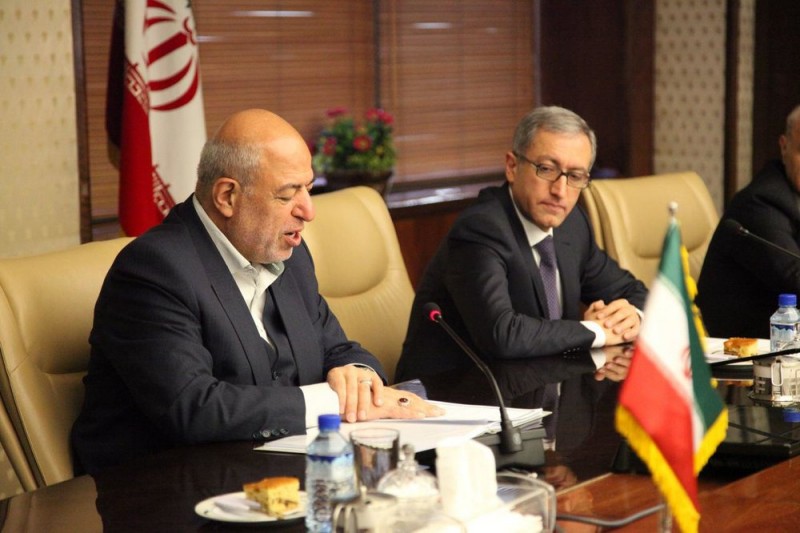The Iran-Armenia Economic Commission agreed to boost bilateral trade.
The commission, which was co-chaired by Iran’s Energy Minister Hamid Chitchian and Armenian Minister of Energy Infrastructure and Natural Resources Ashot Manukyan, ended in Tehran this week.
Speaking at the closing ceremony of the 14th session of the commission on Monday, Chitchian said holding the meeting and exchanging delegations are signs of the strong determination of both sides to bolster cooperation at all levels, Public Radio of Armenia reported on its website.
“Iran pursues the policy of deepening multilateral ties with all neighboring states,” he said.
“Progress and development of Armenia and success of its government and nation are deemed as onward movement of Iran.”
The Iranian official maintained that trade between Iran and Armenia has been disproportionate to political relations of the two sides.
“Similar sessions are expected to pave the way for reinvigoration of bilateral ties,” he said.
Manukyan said the session marked a cornerstone for further collaboration between Tehran and Yerevan.
Trade between Iran and Armenia currently stands at about $400 million per annum and since the Caucasian country is allowed to export more than 6,000 groups of commodities to the European Union by payment of customs duties, Iran could grasp the opportunity to deploy its goods to Europe through Armenia at lower costs.
Armenian-Iranian trade should rise significantly after the construction of a new power transmission line connecting the two countries. The $120 million facility, slated for completion by 2019, will allow for a sharp increase in exports to Iran of Armenian electricity generated by Iranian natural gas.
Armenia plans to increase the import of Iranian gas even before that construction project is complete. An Armenian government delegation held talks for that purpose with representatives of Iran’s National Iranian Gas Export Company in Tehran on October 31 and November 1.
One of Manukyan’s deputies, Hayk Harutiunian, said afterwards that they discussed not only the cost of additional Iranian supplies but also the possible transit of Iranian gas via Armenia.
Armenia currently imports up to 500 million cubic meters of Iranian gas annually through a pipeline built in 2008. In comparison, its gas imports from Russia total around 2 billion cubic meters.
The two sides signed a “comprehensive cooperation document” at the end of the two-day meeting.
“The document envisions cooperation in the fields of energy, electricity exchange, natural gas, banking and insurance, and trade,” Mehr News Agency reported.
Armenia has reaffirmed plans to create a free economic zone along its border with Iran amid ongoing efforts by the governments of the two neighboring states to expand bilateral commercial ties, the US-based Armenian publication Massis Post reported.
Chitchian and Iran’s First Vice President Es’haq Jahangiri talked of Tehran’s strong interest in closer economic cooperation with Yerevan when they met with Manukyan on Monday.
Plans for the tax-free zone were first revealed by officials in Yerevan in late August. Then prime minister, Hovik Abrahamian, said that it would be located in Armenia’s southernmost Meghri District bordering Iran.
In Abrahamian’s words, Iranian entrepreneurs will be able to set up manufacturing firms in the zone and engage in duty-free exports of their products to Russia and other members of the Eurasian Economic Union.


